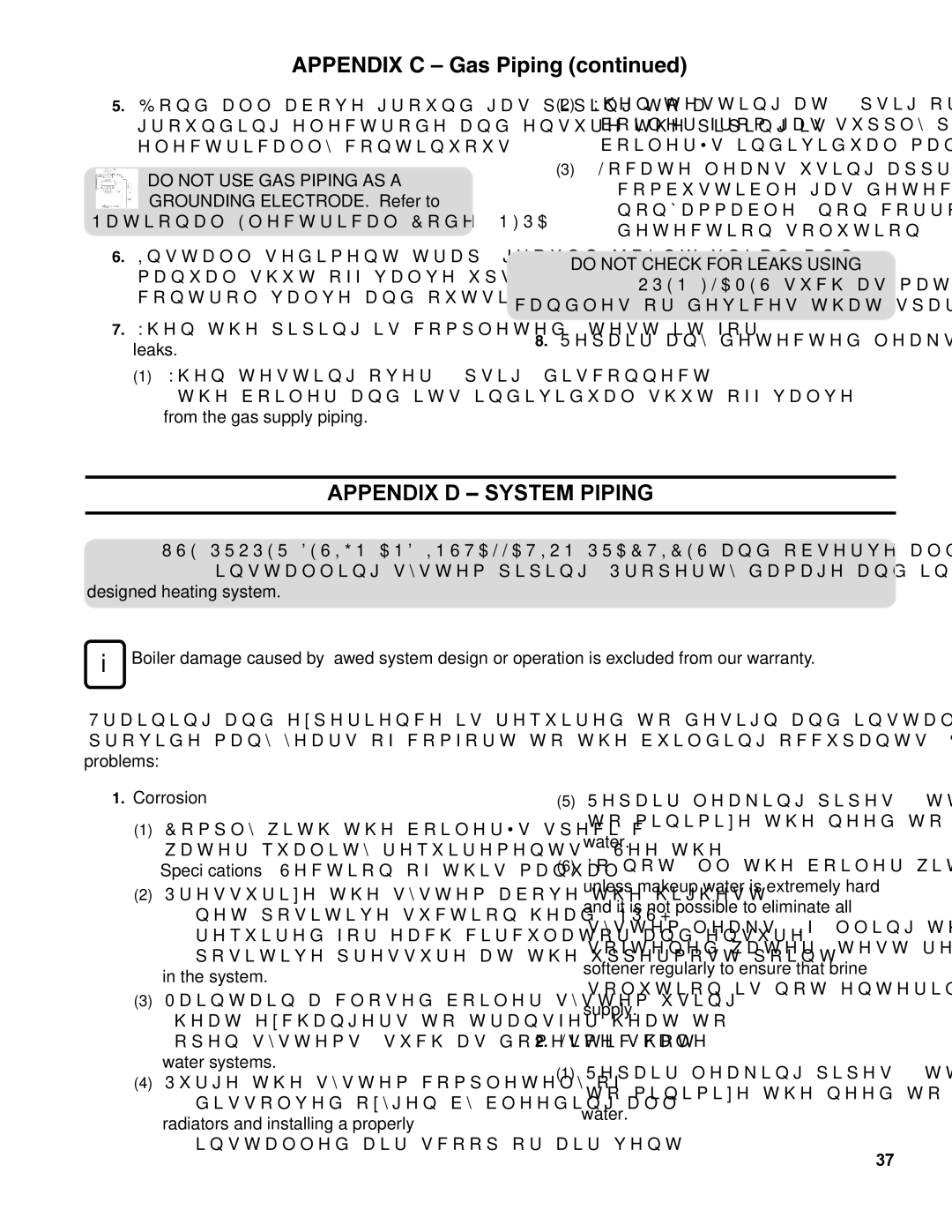
APPENDIX C – Gas Piping (continued)
5.Bond all
DO NOT USE GAS PIPING AS A GROUNDING ELECTRODE. Refer to
National Electrical Code, NFPA 70.
6.Install sediment trap,
7.When the piping is completed, test it for leaks.
(1)When testing over ½ psig, disconnect the boiler and its individual
(2)When testing at ½ psig or less, isolate boiler from gas supply piping by closing boiler’s individual manual
(3)Locate leaks using approved combustible gas detector or nonflammable,
DO NOT CHECK FOR LEAKS USING OPEN FLAMES such as matches or
candles or devices that spark.
8.Repair any detected leaks.
APPENDIX D – System Piping
USE PROPER DESIGN AND INSTALLATION PRACTICES and observe all local codes when installing system piping. Property damage and injury may result from an improperly piped or
designed heating system.
i | Boiler damage caused by flawed system design or operation is excluded from our warranty. |
|
Training and experience is required to design and install a piping system that will protect the boiler and provide many years of comfort to the building occupants. Be sure to protect the boiler from the following problems:
1.Corrosion
(1)Comply with the boiler’s specific water quality requirements. See the Specifications Section of this manual.
(2)Pressurize the system above the highest net positive suction head (NPSH) required for each circulator and ensure positive pressure at the uppermost point in the system.
(3)Maintain a closed boiler system using heat exchangers to transfer heat to open systems, such as domestic hot water systems.
(4)Purge the system completely of dissolved oxygen by bleeding all radiators and installing a properly installed air scoop or air vent.
(5)Repair leaking pipes, fittings, and vents to minimize the need to add makeup water.
(6)Do not fill the boiler with softened water unless makeup water is extremely hard and it is not possible to eliminate all system leaks. If filling the boiler with softened water, test regularly the water softener regularly to ensure that brine solution is not entering the boiler’s water supply.
2.Lime scale
(1)Repair leaking pipes, fittings, and vents to minimize the need to add makeup water.
37
